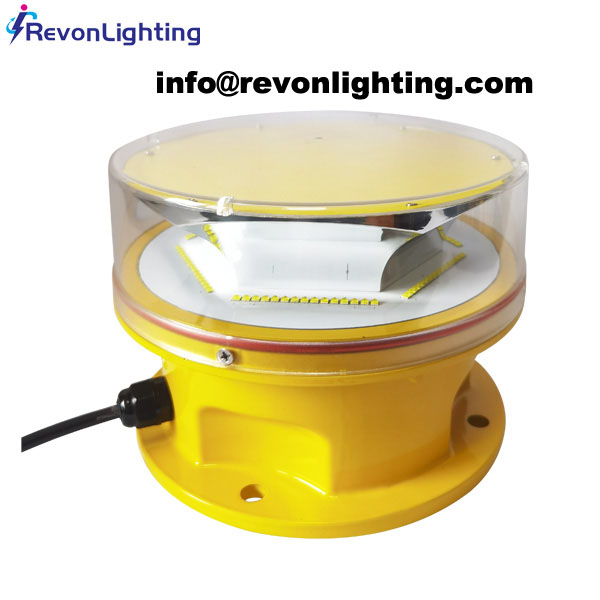Posted: 2024-04-26
Obstruction lights are essential safety devices used to mark tall structures and potential hazards to aircraft navigation. These lights play a crucial role in enhancing visibility for pilots, particularly during low-light conditions or adverse weather.
Obstruction lights come in different types, including Type A, Type B, and medium/high-intensity lights. Type A obstruction lights are typically steady-burning red lights that provide a constant visual cue of the structure's presence during nighttime operations. These lights are mandated by international aviation regulations, such as those set by the International Civil Aviation Organization (ICAO) and the Federal Aviation Administration (FAA). Regular maintenance and inspections are crucial to ensure the proper functioning of Type A obstruction lights, including checking for any damage, verifying alignment and visibility, and promptly replacing any faulty components.
Type B obstruction lights, on the other hand, are flashing red lights that enhance visibility during the day and in low-visibility conditions. The intermittent flashing pattern helps pilots distinguish these lights from other aircraft lights. Similar to Type A lights, Type B obstruction lights must also meet international aviation regulations and undergo rigorous testing to ensure durability and reliability.

Medium and high-intensity obstruction lights provide a more powerful and concentrated beam of light, ensuring maximum visibility for pilots. These lights are typically used for marking taller structures, such as towers, cranes, and chimneys. Compliance with international aviation regulations is essential for these lights, and regular maintenance is required to ensure their proper functioning.
| Obstruction lights | Obstruction light |
Obstruction lights are designed to withstand various weather conditions and contribute to the overall safety of air traffic. By clearly indicating the presence of these structures, pilots can maintain a safe distance and navigate their aircraft accordingly. This helps prevent potential accidents caused by obstacles and ensures the overall safety of air traffic.
In addition to marking tall structures, obstruction lights can also be used for other applications, such as marking wind turbines, telecommunication towers, and offshore platforms. These lights are designed to meet specific requirements for each application, considering factors such as height, location, and environmental conditions.
Advancements in technology have led to the development of more efficient and eco-friendly obstruction lights. LED lights, for example, are widely used due to their long lifespan, energy efficiency, and reliability. These lights offer significant cost savings and contribute to reducing the environmental impact of aviation operations.
In conclusion, obstruction lights play a critical role in aviation safety. They provide clear visual cues to pilots and help maintain a safe airspace. From Type A and Type B lights to medium and high-intensity lights, these devices are designed to withstand various weather conditions and comply with international regulations. By effectively marking tall structures and potential hazards, obstruction lights ensure the overall safety of air traffic and protect both aircraft and structures.